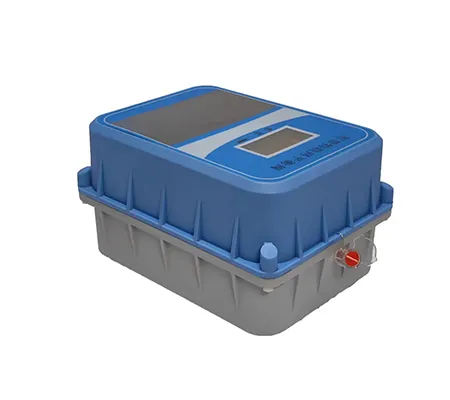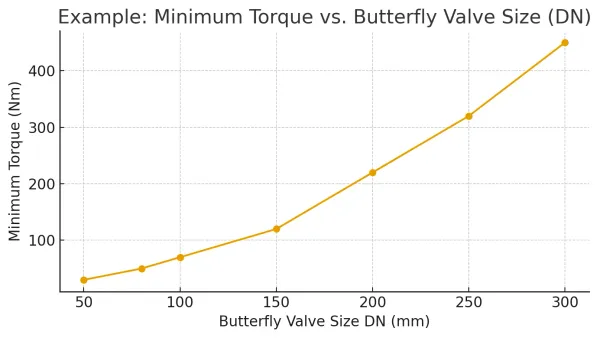Avoid your inquiry is delay response, please enter your WhatsApp/WeChat/Skype along with the message, so we can contact you at the very first time
We will reply you within 24 hours. If for urgent case, please add WhatsApp: +8613188899036, or WeChat: 0531-87968777. Or call 0531-87968777 directly.
* We respect your confidentiality and all information are protected. We will only use your information to respond to your inquiry and will never send unsolicited emails or promotional messages.
Pipes stop. Plants slow. Energy bills spike. The cause? A valve that won’t hold position or an actuator that can’t deliver torque. The fix is simple: pick the right electric motorized solution and install it right—once.
Motorized actuators for a butterfly valve rotate the disc a quarter turn (0–90°) to start, stop, or modulate flow. Choose by torque, voltage (e.g., 24 VDC, 120 VAC, 230), enclosure, and control interface. Match the actuator to valve size, wafer or lug style body, seat material, and service to ensure safe, accurate, bubble-tight performance in HVAC and industrial systems.

Electric Motorized Actuators
A motorized actuator converts electrical energy to rotary motion. That motion turns the valve disc exactly one quarter-turn to open or close. The actuator’s gearbox provides the torque needed to fight pressure and friction. Butterfly valves are typically used where large lines need fast shutoff and compact equipment.
For HVAC and plant application, a butterfly valve is efficient: the disc stays in the line, so head loss is predictable, and the package is light and compact in big sizes. In many systems it’s ideal versus bulky ball valves.
If you need a corrosion-resistant plastic option, PVC butterfly valves are typically paired with electric actuator packages for non-metallic service. See our electric actuated PVC butterfly valve (wafer), a great fit for non-metallic systems. electric actuated PVC butterfly valve .
Wafer bodies slide between flanges and are clamped by through-bolts. They are slim and cost-effective for most motorized builds. Lug style bodies have threaded inserts; they’re better when you must isolate one side for maintenance. Both styles save space compared to flanged isolation valve types.
Pick wafer when weight and budget matter, and lug style when you need dead-end service. Pair either with a direct-mount actuator via ISO 5211 pads and you’ll get a rigid, accurate position with fewer brackets. For metal duties, review our ductile iron electric butterfly valve for robust isolation in industrial lines (internal link).
Start with minimum torque. Size for the closed-to-open breakaway and add a safety margin for temperature, solids, or viscosity shifts. Many actuator catalogs list torque per size; consult reputable datasheets (e.g., valworx) for typical ranges and “stays in last known position with loss of power” behavior.
Voltage and power options:
Enclosures and duty cycle matter. For outdoor or washdown, specify IP67/68 or NEMA 4/4X housings, heaters for condensation (internal), and continuous-duty motors when you expect frequent modulation. For position control, select units with visual position indicators and factory-set limit switches.
For fieldbus and analog control, consider our RS485 rotary actuator for building BMS links, or Proportional rotary actuator for smooth throttling .
Match materials of construction to media and temperature. Ductile iron bodies handle pressure well and resist shock; PVC is light and corrosion-proof but has temperature limits; stainless disc/stem combinations boost cleanability and corrosion resistance.
Seat and elastomer choice matters for longer seat life. Buna-N (NBR) seats balance cost, oil resistance, and sealing in water and liquid media compatible services; EPDM shines in hot water; FKM handles many solvents. Always verify media compatible with the materials in contact.
For potable and drinking water, verify certifications (e.g., NSF/AWWA) and consult modern guidance such as AWWA C504, which sets performance standard expectations for rubber-seated designs.
For on/off service, a simple 2-wire open/close control signal drives the actuator. For throttling, add an analog input (4–20 mA or 0–10 V) with feedback. This allows accurate position control and better flow control across load changes.
Networking options, such as RS-485/Modbus or wireless LoRa, simplify integration across large plants. Explore our LoRa rotary actuator for long-range links or the RS485 rotary actuator where wired networks are preferred .
In HVAC, butterfly valves are typically used on chilled, hot, and condenser water mains to modulate and isolate large loops—fast, light, and cost-effective in big diameters.
For municipal service, AWWA C504 rubber-seated designs cover raw and treated water duties. In plants handling chemical, food processing, or pulp and paper, pick elastomers and seat materials that are compatible and consider abrasion or temperature.
Used for flow isolation and regulation across diverse industries, an industrial butterfly package remains ideal when space is tight and maintenance windows are short.
See our plastic and metal options: UPVC electric butterfly valve for corrosive services and stainless-steel electric ball valve when a ball design is preferred
Precision starts with torque. Determine the minimum breakaway torque at design differential pressure, add safety factors for temperature or solids, then pick the next actuator size. The curve below is a simple example for illustration; consult the project specification and supplier data before final selection. (Chart above.)
Actuators include travel stops and limit sets so the valve closes fully without over-loading the seat. Combine manual override and a gear train (worm gear) for safe hand operation during service. Modern units maintain last known position with loss of power and provide feedback for valve position.
If you need fine control on plastics, a positioner-equipped package gives accurate throttling. Our electric actuator options with integral positioners are suitable for many water services, including control of water and liquid duties. See the modulating PVC option from the valworx catalog for reference language and behavior.

Sizing for precision
Good installation locks in performance:
For buildings networks, consider our Proportional rotary actuator for smooth control or pair a valve with our UPVC electric ball valve when you prefer ball-type behavior (internal links).
A campus needed to motorize 8-inch lines on a condenser water header. The team chose wafer bodies with EPDM seat and stainless disc/stem for corrosion resistance. The electric drives accepted 120 vac, included manual override, and held the last known position with loss of power—keeping the loop stable during brief outages.
Result: faster balancing, bubble-tight shut-off, and lower pump energy. The quarter-turn packages were easy to mount, and the compact profile left room for strainers and meters. A modern positioner provided flow control with smooth ramps and fewer water hammer events.
For fieldbus integration, the team added an RS485 rotary actuator on the bypass and a LoRa rotary actuator for a remote fill line .
| Component | Option | Service hints |
|---|---|---|
| Body | PVC | Light, corrosion-proof; check temp/pressure limits |
| Ductile iron | Strong, versatile, coated for water; common in plants | |
| Seat | Buna-N (NBR) | Oils and general liquid service; cost-effective |
| EPDM | Hot water, many HVAC uses | |
| Disc/Stem | 316SS disc / SS stem | Cleanability, corrosion resistance |
Always verify materials of construction are compatible with the process.
What’s the best way to size an electric actuator for a butterfly valve?
Use published torque data at your differential pressure, add safety factor, and match the actuator output. Confirm close torque, duty cycle, and limit switches. When in doubt, consult supplier curves or standards such as AWWA C504 for water service expectations.
Is a PVC package okay for potable/drinking water?
Yes—when the valve and elastomers carry NSF/ANSI approvals. Some electric PVC packages come certified for potable/drinking water systems; verify the listing and temperature range before release.
When should I pick lug style instead of wafer?
Choose lug style when you need to unbolt one side for service or dead-end isolation. Pick wafer for compact installs where both sides remain bolted.
Can butterfly valves throttle accurately?
Yes. With a positioner and proper trim, they can modulate flow well in large lines. Many modern units feature precision drives and feedback for accurate control. For smaller, high-pressure drops you might still choose ball valves. Which voltages are available?
Common supplies include 24 VDC, 120 VAC, and 230 VAC. Multi-range designs simplify spares. Check labels for vac/dc notation and panel power limits.
Do I need accessories?
Often yes. Add heaters, local selectors, and an accessory kit for feedback relays or positioners. Keep a manual override for safe hand operation during outages.